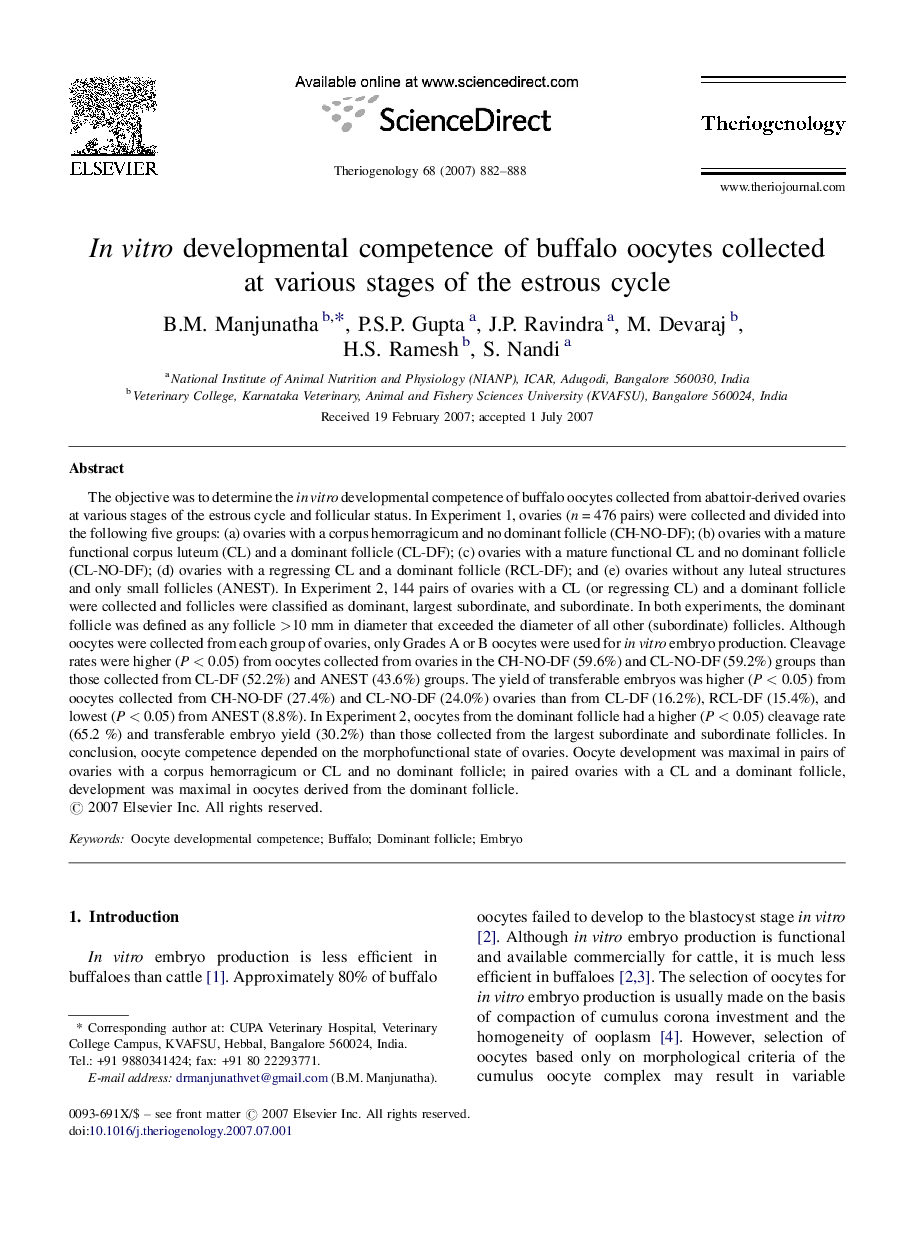| Article ID | Journal | Published Year | Pages | File Type |
|---|---|---|---|---|
| 2096133 | Theriogenology | 2007 | 7 Pages |
Abstract
The objective was to determine the in vitro developmental competence of buffalo oocytes collected from abattoir-derived ovaries at various stages of the estrous cycle and follicular status. In Experiment 1, ovaries (n = 476 pairs) were collected and divided into the following five groups: (a) ovaries with a corpus hemorragicum and no dominant follicle (CH-NO-DF); (b) ovaries with a mature functional corpus luteum (CL) and a dominant follicle (CL-DF); (c) ovaries with a mature functional CL and no dominant follicle (CL-NO-DF); (d) ovaries with a regressing CL and a dominant follicle (RCL-DF); and (e) ovaries without any luteal structures and only small follicles (ANEST). In Experiment 2, 144 pairs of ovaries with a CL (or regressing CL) and a dominant follicle were collected and follicles were classified as dominant, largest subordinate, and subordinate. In both experiments, the dominant follicle was defined as any follicle >10 mm in diameter that exceeded the diameter of all other (subordinate) follicles. Although oocytes were collected from each group of ovaries, only Grades A or B oocytes were used for in vitro embryo production. Cleavage rates were higher (P < 0.05) from oocytes collected from ovaries in the CH-NO-DF (59.6%) and CL-NO-DF (59.2%) groups than those collected from CL-DF (52.2%) and ANEST (43.6%) groups. The yield of transferable embryos was higher (P < 0.05) from oocytes collected from CH-NO-DF (27.4%) and CL-NO-DF (24.0%) ovaries than from CL-DF (16.2%), RCL-DF (15.4%), and lowest (P < 0.05) from ANEST (8.8%). In Experiment 2, oocytes from the dominant follicle had a higher (P < 0.05) cleavage rate (65.2 %) and transferable embryo yield (30.2%) than those collected from the largest subordinate and subordinate follicles. In conclusion, oocyte competence depended on the morphofunctional state of ovaries. Oocyte development was maximal in pairs of ovaries with a corpus hemorragicum or CL and no dominant follicle; in paired ovaries with a CL and a dominant follicle, development was maximal in oocytes derived from the dominant follicle.
Related Topics
Life Sciences
Agricultural and Biological Sciences
Animal Science and Zoology
Authors
B.M. Manjunatha, P.S.P. Gupta, J.P. Ravindra, M. Devaraj, H.S. Ramesh, S. Nandi,
